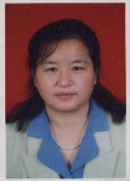Integration of Food and Medicines
Author: Dr. Lee
Clicks:
Time: 2010/11/20 16:56:17
There was a story. One day,a teacher told his student, "You can graduate immediately if you can bring a herb that is not medicinal to me." The student went away and secretly felt very fortunate. However after several days he returned with an empty hand and said sadly to his teacher,"Inevitably I cannot graduate." The teacher asked why. The student replied, "I have observed many grasses and trees. I cannot recognize some of them, but all of them are medicinal." The teacher laughed, "You have already accomplished your studies. You can leave now."
Since both foods and medicines come from natural plants, there is no definite difference between them.
That is why there is the so-called dietetic therapy in TCM. Among the 365 kinds of herbs recorded in Shen Nong Ben Cao Jing (Agriculture God's Canon on Materia Medica), quite a number of them are edible, such as jujube, lotus and honey. In the book entitled Bei Ji Qian Jin Yao Fang (Prescriptions for Emergency) compiled in the Tang Dynasty by Sun Simiao, there is a special chapter devoted to dietetic therapy. In the book entitled Ben Cao Gang Mu (Compendium of Materia Medica) compiled in the Ming Dynasty by Li Shizhen, over 200 kinds of edible herbs are used for medical purpose and there are several hundred prescriptions developed for healthcare and dietetic purposes.
In Huang Di Nei ling (Yellow Emperor's Canon of Medicine), it says, "The five kinds of crops are used for nourishment, the five kinds of fruits are used for supplementation, the five kinds of animals are used for tonification, and the five kinds of vegetables are used for enrichment." It emphasizes the importance of taking various kinds of foods and reasonable combination of property and taste of foods. According to TCM, each plant or herb must possess the properties of being cold, heat, warm or cool. Foods cold and cool in nature, such as chrysanthemum and green gram, can clear away heat and reduce fire. Foods hot and warm in nature, such as ginger, garlic and mutton, can strengthen yang and eliminate cold. Some foods are mild in nature, such as beans and grains. Besides, foods still bear special taste and different tastes may indicate different effects. For example, foods of sour taste, such as dark plum and hawthorn, can stop sweating and diarrhea and astringe urine.
Foods bitter in taste, such as tangerine peel and balsam pear, can clear away heat, reduce fire, dry dampness and remove toxin. Foods of sweet taste, such as brown sugar and honey, can nourish and relax the body. Foods of salty taste, such as kelp and laver, can soften hardness and disperse nodules. Foods of acrid taste, such as hot pepper and pepper, can promote movement of qi and blood flow.Dietetic therapy may mean to take food as medicine or to combine food with medicine.
The latter is now known as medicated food which is developed by taking the advantages of the medicinal property and dietetic taste of certain herbs, plants or crops. The variety and dosage for dietetic therapy are strictly restricted. The effects of dietetic therapy are recognized by more and more people. Now in China the restaurants running medicated foods are increasing rapidly in many cities. The traditional medicated foods are now also influenced by modern scientific ideas. For instance, it is generally known now that olive oil can lower blood fat, vegetables are rich in vitamin and fibrin, wine can soften vessels and seafood can improve mentality.

